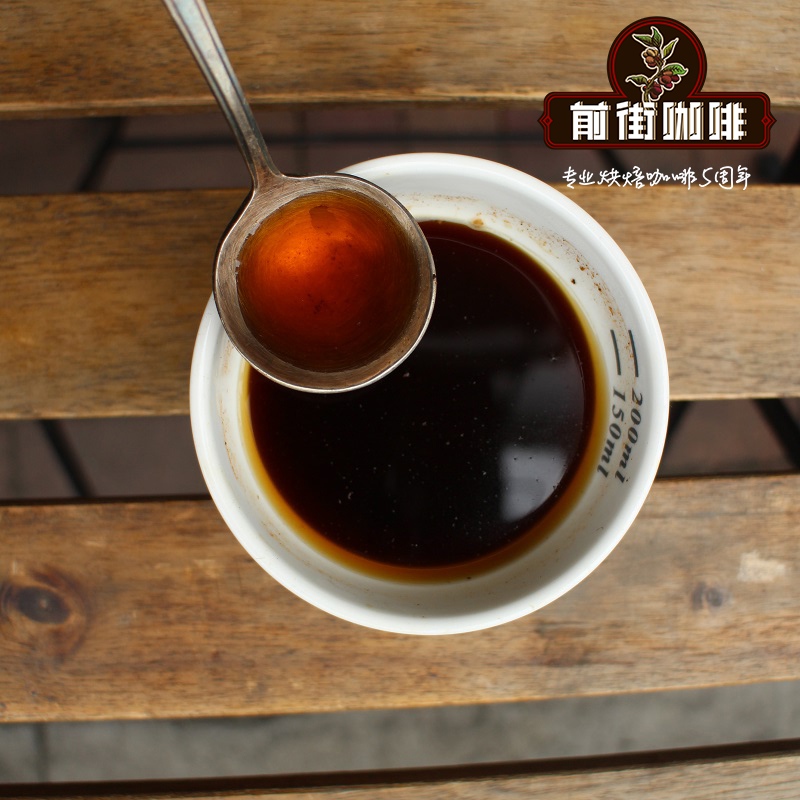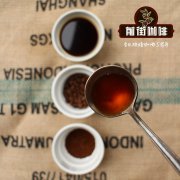What are the characteristics of Colombian Medellin coffee beans? Does Colombia produce a lot of coffee? How to cook, brother?

Professional coffee knowledge exchange more coffee bean information please follow the coffee workshop (Wechat official account cafe_style)
What are the characteristics of Colombian Medellin coffee beans? Does Colombia produce a lot of coffee?
Whether in terms of yield or texture, Colombian coffee is first produced by Medellin, which is characterized by full grains, rich nutrition, moderate acidity and good balance. In addition to Medellin, the provincial capitals of two neighboring provinces in the south, Armenia and Manizales, are also famous coffee producers, which formerly belonged to the province of Andiquio, where Medellin is located. These three places form the world-famous "coffee zone". Colombia's Supremo is a big coffee producer in the world. If you love coffee, you must know that the main coffee is washed, because it is located in the diverse ecology of South America, and it is also a suitable place for coffee beans to grow. This time, Supremo coffee beans are beans with the highest grade of more than 17 mesh in Colombia coffee beans. After tasting, I also thank the world for giving us such a good environment to make coffee beans so delicious!
Colombian coffee is divided into three grades: Supremo, Excelso, Extra and so on. Supremo is the most advanced coffee; the coffee beans used in the top coffee are larger and its raw materials are taken from the newly harvested coffee beans, followed by Extra. Most of the Columbia region have changed to grow faster-growing coffee trees; excellent coffee is usually softer and slightly higher acidity than top coffee, but both are aromatic coffee with moderate granules and fine fruit.
Coffee trees in Colombia are mainly cultivated in the Andes, where the year-round temperature is about 18 degrees Celsius, on steep slopes about 1300 meters above sea level. The latitude, altitude, soil, plant origin of species and varieties of coffee in the coffee growing area of Colombia are very suitable for the growth of coffee, with mild climate, humid air and can be harvested regardless of season. Therefore, the pure taste of Colombian coffee comes from Colombia's natural environment with the most favorable conditions for coffee growth.
Colombian coffee is classified according to the size of raw beans (sieve). It is mainly classified into Supremo (sieve 17) and Excelso (sieve 14). Supremo is Colombia's high-quality raw beans. Located in the volcanic type of fertile soil, coupled with abundant rainfall, resulting in excellent growth conditions. The coffee is rich in taste, with drupe and fruit aromas, blended berry acidity, slightly black sugar sweetness and a long, unforgettable finish.
Whether in terms of yield or texture, Colombian coffee is first produced by Medellin, which is characterized by full grains, rich nutrition, moderate acidity and good balance. In addition to Medellin, the provincial capitals of two neighboring provinces in the south, Armenia and Manizales, are also famous coffee producers, which formerly belonged to the province of Andiquio, where Medellin is located. These three places form the world-famous "coffee zone".
Colombian coffee is divided into three grades: Supremo, Excelso, Extra and so on. Take Supremo as the most advanced coffee; the coffee beans used in the top coffee are larger and its raw materials are taken from the newly harvested coffee beans, followed by Extra. Most of the Columbia region have changed to grow faster-growing coffee trees; excellent coffee is usually softer and slightly more acidic than top coffee, but both are aromatic coffee with moderate granules and fine fruit.
Coffee trees in Colombia are mainly cultivated in the Andes, where the year-round temperature is about 18 degrees Celsius, on steep slopes about 1300 meters above sea level. The latitude, altitude, soil, plant origin of species and varieties of coffee in the coffee growing area of Colombia are very suitable for the growth of coffee, with mild climate, humid air and can be harvested regardless of season. Therefore, the pure taste of Colombian coffee comes from Colombia's natural environment with the most favorable conditions for coffee growth.
Dry aroma is drupe and orange fruit aroma, wet aroma of orange peel and cocoa, sipping entrance is quite smooth and smooth, slightly berry embellished with pull, taste clean with layers, oil increases moisture, black sugar aroma and sweetness. In Colombian coffee, Spremer SUPREMO is the most distinctive. It is a soft mouth species with high balance, high aroma, good acidity and sweet taste. On the whole, it has the characteristics of sweet in acid and flat in bitterness, especially exotic fragrance, excellent flavor, stable quality and flavor. A very mellow coffee with a sweet and sour taste, slightly bitter. The cracks in the middle of the coffee beans are white, because most of the locally produced beans are washed, and Colombia is the second largest coffee producer in the world, so Colombian coffee beans are often seen in mixed coffee, which is characterized by its acidity and balanced flavor.
Qianjie recommended cooking:
Filter cup: Hario V60
Water temperature: 88 degrees
Degree of grinding: small Fuji degree of grinding 4
Cooking methods: the ratio of water to powder is 1:15, 15g powder, the first injection of 25g water, 25 s steaming, the second injection to 120g water cut off, waiting for the powder bed water to half and then water injection, slow water injection until 225g water, extraction time about 2:00
Analysis: using three-stage brewing to clarify the flavor of the front, middle and back of the coffee. Because the V60 has many ribs and the drainage speed is faster, when the water is cut off, it can prolong the extraction time and better extract the nut and chocolate flavor of the tail section.
Flavor: changeable layers, clean as a whole, thin taste, long-lasting caramel sweetness in the finish.
Important Notice :
前街咖啡 FrontStreet Coffee has moved to new addredd:
FrontStreet Coffee Address: 315,Donghua East Road,GuangZhou
Tel:020 38364473
- Prev

[Katim] the planting history of the variety? Are Yunnan Katim coffee beans delicious? What are the advantages and disadvantages?
Professional coffee knowledge exchange more coffee bean information please follow the coffee workshop (Wechat official account cafe_style) [Katim] the planting history of varieties? Are Yunnan Katim coffee beans delicious? What are the advantages and disadvantages? How to cook it? Most of the plants in Yunnan are now Katim, which is the bourbon branch of the Arabica species, Kaddura and Robusta.
- Next

Coffee bean producing country | Columbia Magellin coffee bean flavor characteristics and taste? How to cook wheat
Professional coffee knowledge exchange more coffee bean information please follow the coffee workshop (Wechat official account cafe_style) coffee bean producing country | Colombia Magellin coffee bean flavor characteristics and taste? How to cook Magellin to taste good? The world's largest producer of high-quality coffee, traditional deep-roasted coffee has a strong and memorable taste. Colombian coffee is one of the few
Related
- Detailed explanation of Jadeite planting Land in Panamanian Jadeite Manor introduction to the grading system of Jadeite competitive bidding, Red bid, Green bid and Rose Summer
- Story of Coffee planting in Brenka region of Costa Rica Stonehenge Manor anaerobic heavy honey treatment of flavor mouth
- What's on the barrel of Blue Mountain Coffee beans?
- Can American coffee also pull flowers? How to use hot American style to pull out a good-looking pattern?
- Can you make a cold extract with coffee beans? What is the right proportion for cold-extracted coffee formula?
- Indonesian PWN Gold Mandrine Coffee Origin Features Flavor How to Chong? Mandolin coffee is American.
- A brief introduction to the flavor characteristics of Brazilian yellow bourbon coffee beans
- What is the effect of different water quality on the flavor of cold-extracted coffee? What kind of water is best for brewing coffee?
- Why do you think of Rose Summer whenever you mention Panamanian coffee?
- Introduction to the characteristics of authentic blue mountain coffee bean producing areas? What is the CIB Coffee Authority in Jamaica?

